Africa’s big cats—lions, leopards, and cheetahs—are among the continent’s most iconic wildlife. Kenya and Tanzania offer some of the best opportunities to observe these majestic predators in their natural habitats. This guide covers top destinations, optimal times to visit, recommended accommodations, and the advantages of choosing RealEdge Tours, a Nairobi-based tour operator.
Why Kenya and Tanzania?
Kenya and Tanzania are renowned for their rich biodiversity and expansive savannahs. The Maasai Mara and Serengeti ecosystems, in particular, are prime locations for big cat sightings. These regions are home to significant populations of lions, leopards, and cheetahs, offering unparalleled wildlife viewing experiences.
Top Destinations for Big Cat Sightings
1. Maasai Mara National Reserve, Kenya
The Maasai Mara is one of Africa’s most iconic safari destinations—and for good reason. Spanning over 1,500 square kilometers in southwestern Kenya, the reserve is an extension of Tanzania’s Serengeti ecosystem and a critical habitat for Africa’s big cats. It’s particularly renowned for its thriving populations of lions, cheetahs, and leopards, which roam the vast open plains, acacia-dotted landscapes, and dense riverine forests.
But what truly sets the Mara apart is the drama of the Great Migration. From July to October, over 1.5 million wildebeest, zebras, and gazelles thunder into the Mara from the Serengeti in search of greener pastures. This mass movement draws out predators in force, creating some of the most intense and unforgettable wildlife interactions you can witness anywhere on Earth.
Big Cat Highlights in the Maasai Mara:

- Lions: The Mara is home to one of the highest densities of lions in the world. Prides here can number over 20 individuals, and it’s common to see them hunting, resting in the grass, or teaching cubs survival skills.
- Cheetahs: With its wide, open plains, the Mara provides the perfect terrain for cheetahs to hit top speeds while hunting. Look for them perched on termite mounds, scanning the horizon.
- Leopards: These elusive cats are often found near the Mara and Talek Rivers, where thick vegetation offers cover. While harder to spot than lions or cheetahs, patient guides often succeed in tracking them down—especially in early morning or late afternoon.
- Photographic Opportunities: The lighting, landscape, and sheer abundance of wildlife make the Mara a photographer’s dream. Whether you’re using a DSLR or a smartphone, it’s hard not to come away with a few once-in-a-lifetime shots.
When to Go:
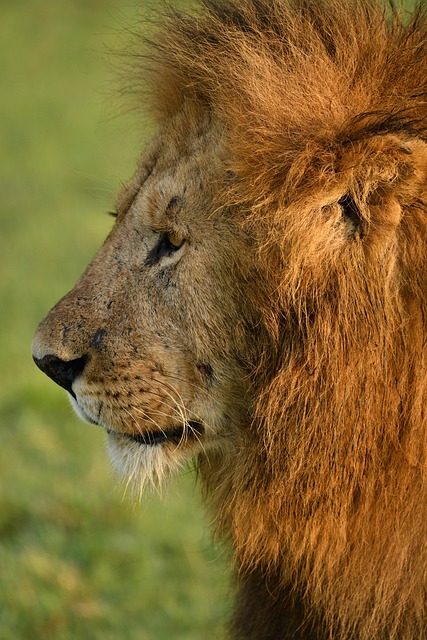
- July to October: Peak season, coinciding with the Great Migration and highest predator activity.
- December to March: Calving season—lots of newborns and increased predator-prey interactions.
- April to June: Lush and green, with fewer tourists, but some roads can be muddy during the rains.
Recommended Lodges in the Maasai Mara:
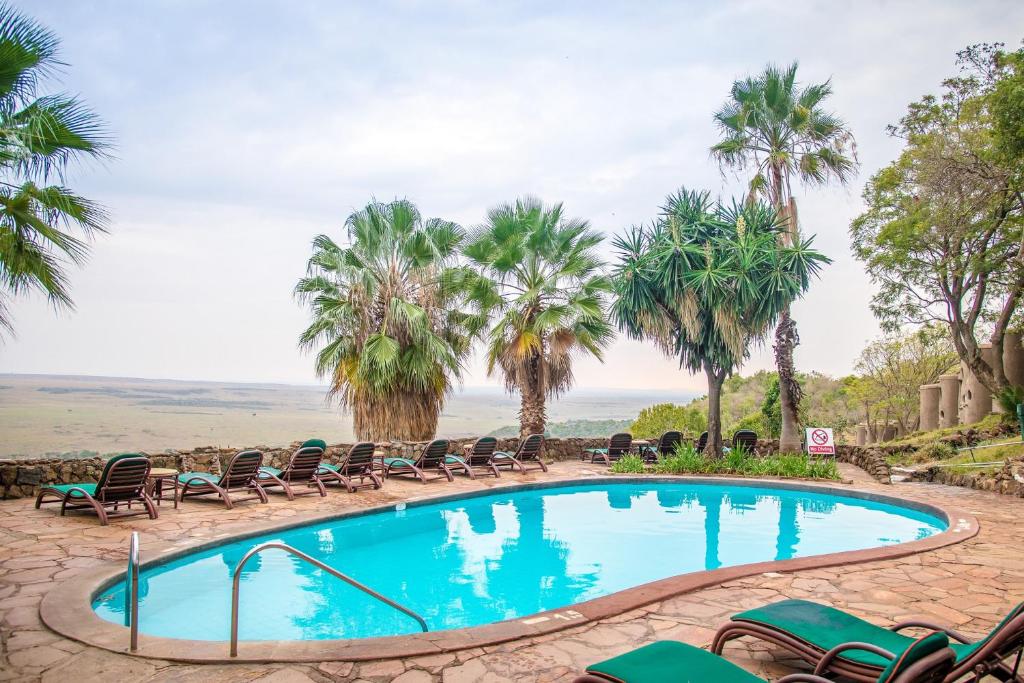


Mara Serena Safari Lodge
- Located on a hilltop, this lodge offers sweeping views across the Mara Triangle and easy access to key migration routes.
- It combines comfort with proximity to action, making it ideal for travelers who want the balance of great game viewing and reliable amenities.
- Its location inside the park means early game drives without long transfers from the gate.
Governors’ Camp

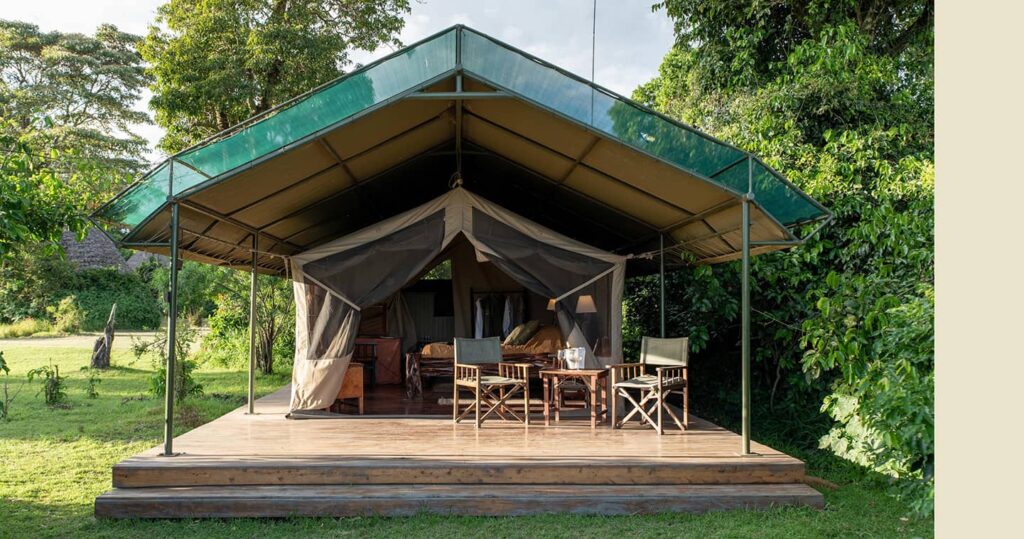

- One of the oldest and most established tented camps in the Mara, Governors’ Camp sits on the banks of the Mara River, right in the heart of the best wildlife territory.
- Elephants often wander through camp, and it’s not uncommon to hear lions or hyenas calling in the night.
- The camp’s position offers a front-row seat to the migration crossings and exceptional predator viewing all year round.
2. Serengeti National Park, Tanzania
The Serengeti is synonymous with African safari. Spanning nearly 15,000 square kilometers, it’s one of the largest and most famous national parks on the continent. The name “Serengeti” means “endless plains” in Maasai, and it’s no exaggeration—standing on a kopje (granite outcrop), the landscape seems to roll on forever in every direction.
But it’s not just the size or the scenery that makes the Serengeti special. This park is arguably the best place in Africa to see big cats, particularly lions. It’s estimated that over 3,000 lions call the Serengeti home, forming some of the largest and most well-documented prides on the continent. These predators thrive thanks to the abundance of prey—from gazelles to zebras to the ever-moving wildebeest.
The park is divided into several regions, each with its own terrain, microclimate, and wildlife density. This diversity of habitats supports robust populations of not just lions, but also cheetahs and leopards, making it an all-in-one destination for big cat enthusiasts.
Big Cat Highlights in the Serengeti:
- Lions: You can see lions almost anywhere in the Serengeti. They’re active year-round, often seen lazing in the shade, stalking prey, or gathered around a fresh kill. Some prides here have been studied for decades, and you might even recognize individuals from documentaries like Big Cat Diary or Dynasties.
- Cheetahs: The southeastern plains, especially around Namiri Plains, are the best areas for spotting cheetahs. The short grass allows them clear sightlines to spot prey and open space to sprint.
- Leopards: The Seronera Valley is a hotspot for leopard sightings. These elusive cats are often found draped over acacia branches or slinking through the woodlands in early morning or dusk. Local guides know their favorite trees and haunts, increasing your odds of a memorable sighting.
- Other Predators: While the focus is on big cats, the Serengeti is also home to spotted hyenas, bat-eared foxes, and occasionally even caracals and servals—smaller, rarer wild cats that are a treat to see.
When to Go:
- December to March: Calving season in the southern plains. Large herds and lots of vulnerable young animals = prime time for predator activity.
- June to October: Dry season and migration movement through the western and northern corridors. Great visibility, and predators follow the herds.
- November & April–May: Shoulder seasons. Quieter and greener, with fewer tourists and excellent photo conditions, though rain can make some areas harder to reach.
Recommended Lodges in the Serengeti:
Namiri Plains Camp (Asilia Africa)
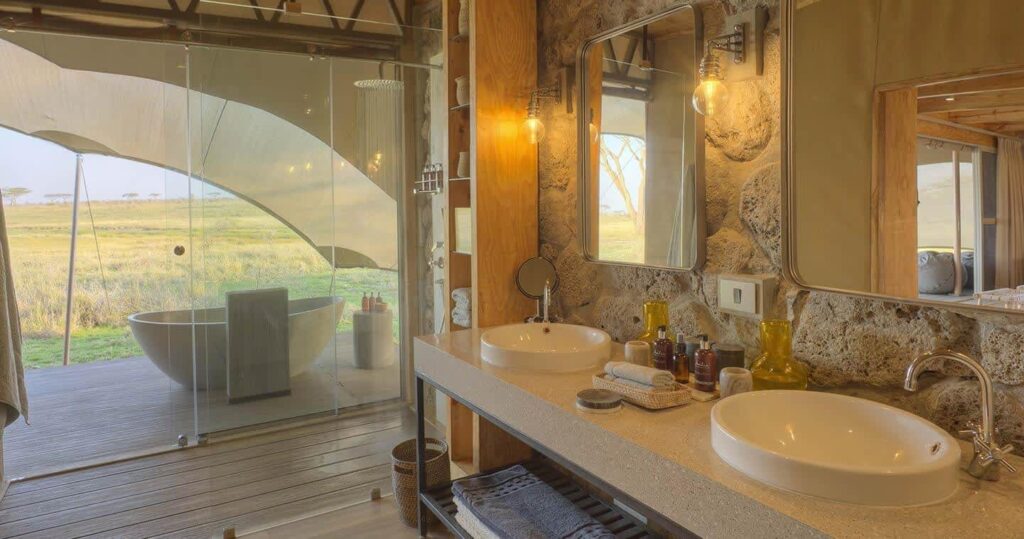
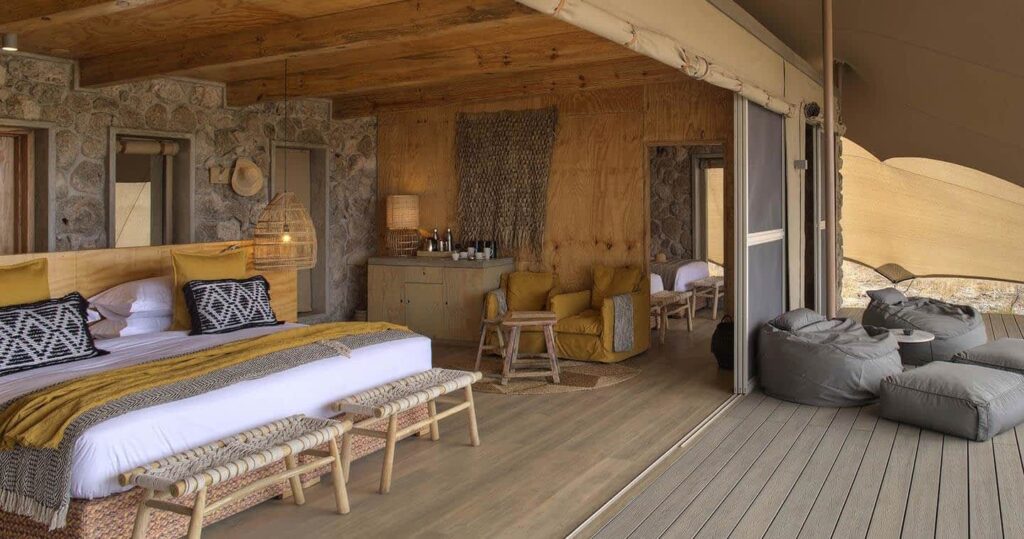
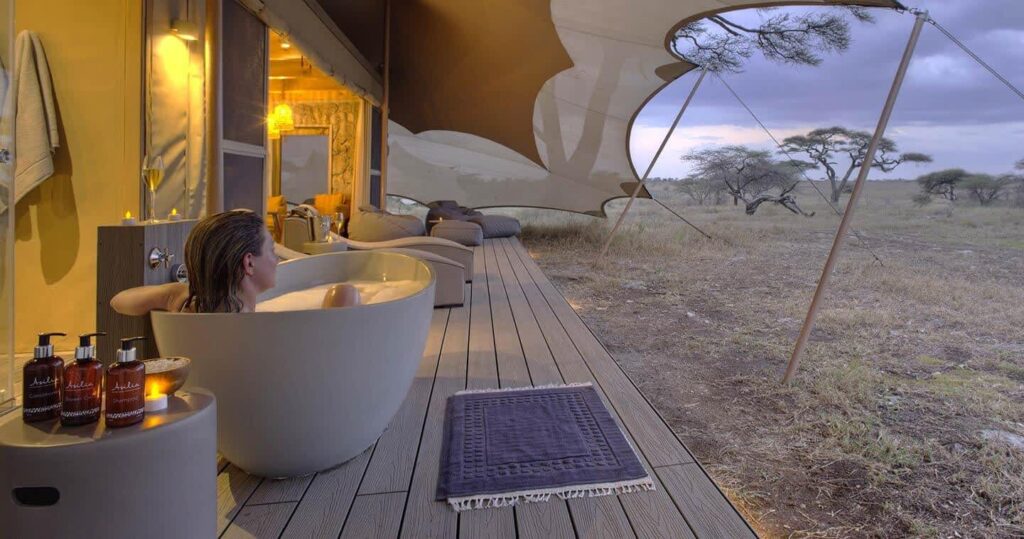
- Situated in a formerly off-limits cheetah conservation area, Namiri Plains offers unmatched opportunities for seeing these high-speed hunters in action.
- The camp is stylish and eco-conscious, with a modern, minimalist design that blends beautifully with its surroundings.
- Because of its remote location in the eastern Serengeti, the area sees fewer vehicles, giving guests a more intimate, exclusive experience.
Serengeti Serena Safari Lodge
- Located in the Seronera region (central Serengeti), this lodge is perfectly placed for year-round game viewing and easy access to multiple ecosystems.
- It offers a great balance between comfort and location, with traditional architecture and panoramic views of the surrounding savannah.
- It’s a good base for travelers looking to explore a variety of wildlife-rich areas without changing camps every few days.
3. Samburu National Reserve, Kenya
Samburu is a hidden gem in Kenya’s safari circuit. Tucked away in the semi-arid northern region of the country, this reserve offers a dramatic contrast to the lush greenery of the Maasai Mara and the expansive plains of the Serengeti. Here, rugged hills, volcanic rock outcrops, and dry riverbeds define the landscape, with the life-giving Ewaso Nyiro River winding through the heart of it all.
Samburu is not just about scenery—it’s a top destination for leopard sightings, often boasting better chances of spotting these elusive cats than anywhere else in Kenya. The reserve’s unique terrain, relatively low visitor traffic, and rich diversity of wildlife make it an ideal choice for travelers looking for a more off-the-beaten-path safari that still delivers big on game viewing.
Big Cat and Wildlife Highlights in Samburu:
- Leopards: Samburu has earned a reputation as one of the best places in East Africa to see leopards. The dense vegetation along the Ewaso Nyiro River provides perfect cover for these elusive cats, and sightings are surprisingly common—especially in the early morning or just after sunset.
- Lions and Cheetahs: While not as abundant as in the Mara, both species are regularly seen. Lions often lounge under the sparse trees near the riverbanks, while cheetahs are typically found in the more open areas away from the river.
- The Samburu Special Five: Beyond the big cats, Samburu is home to a set of rare and endemic species you won’t find in many other parks:
- Grevy’s Zebra – larger, with narrow stripes and a white belly.
- Reticulated Giraffe – strikingly patterned with clean, polygonal shapes.
- Beisa Oryx – a sleek antelope with long, spear-like horns.
- Gerenuk – also known as the “giraffe gazelle,” it stands on hind legs to browse trees.
- Somali Ostrich – blue-legged and distinct from its southern cousin.
- Grevy’s Zebra – larger, with narrow stripes and a white belly.
- Elephants: Large herds often gather at the river for water, especially during the dry season. Watching them bathe or interact socially is a daily highlight.
When to Go:
- June to October: Dry season—excellent for wildlife viewing, as animals congregate around the river. Clear skies and warm temperatures make this the best time for photography and spotting predators.
- December to March: Another dry window. Less crowded and great for birdwatching, as many migratory species arrive.
- April–May & November: Rainy seasons. The landscape turns green, but access can be tricky and some areas may be closed due to flooding.
Recommended Lodges in Samburu:
Elephant Bedroom Camp
- Tucked under doum palms and right along the banks of the Ewaso Nyiro, this upscale tented camp blends comfort and wildness.
- True to its name, elephants regularly stroll through the unfenced property—sometimes walking within a few meters of guests (always safely monitored by staff).
- Each tent has a private plunge pool, open-air showers, and stunning river views. It’s ideal for travelers who want immersive nature with high-end touches.
Samburu Intrepids
- A classic safari camp that emphasizes education and deep wildlife insight. Their guides are top-tier, often trained naturalists with years of experience tracking leopards and interpreting animal behavior.
- Located in a prime game-viewing area near the river, the camp is family-friendly and offers activities like nature walks, bush dinners, and lectures under the stars.
- Great for both first-time visitors and seasoned safari-goers who want a deeper understanding of the ecosystem.
4. Ngorongoro Crater, Tanzania
The Ngorongoro Crater is often described as one of the most extraordinary wildlife destinations in the world—and rightly so. Formed by the collapse of a massive volcano around two to three million years ago, the crater spans about 260 square kilometers and plunges over 600 meters deep. Today, it’s a lush, self-contained ecosystem teeming with wildlife and protected as a UNESCO World Heritage Site.
What makes the Ngorongoro Crater so unique is its incredible biodiversity within a compact area. Often referred to as a “natural enclosure” or “Eden of Africa,” it hosts one of the densest concentrations of predators in East Africa, along with nearly every classic safari species, from elephants and rhinos to hippos and flamingos. For those interested in big cats, the crater is a reliable spot—especially for lions.
Because the animals here rarely migrate in or out, game viewing is consistent throughout the year. It’s one of the few places where visitors can see the “Big Five”—lion, leopard, elephant, rhino, and buffalo—in a single day.
Big Cat Highlights in the Ngorongoro Crater:
- Lions: The crater floor supports a healthy lion population, with several prides patrolling the grasslands. The lions here are known for their bold behavior—perhaps due to a lack of threats or competition from external prides. You’ll often see them lounging in the open, walking along the road, or hunting in plain view.
- Leopards: More elusive than lions, leopards are typically found in the forests along the crater rim or the Lerai Forest inside the crater. Sightings are possible, especially with an experienced guide, but not guaranteed.
- Cheetahs: Cheetahs are present in the crater, particularly in the open southern plains. However, they’re less commonly seen than lions due to the crater’s relatively limited open space and high density of other large predators like hyenas.
- Hyenas: While not a big cat, hyenas are key players in the predator hierarchy here, often challenging lions for kills and dominating scavenger behavior.
When to Go:
- Dry Season (June to October): Ideal for game viewing—animals are easier to spot, and the roads are in good condition. Lion sightings are particularly strong during this time.
- Green Season (November to May): The landscape turns lush and beautiful. Fewer tourists mean quieter game drives, and you may still have excellent lion and elephant sightings. Birding is also excellent during these months.
- Year-Round Access: Because the animals stay inside the crater, there’s no “bad” time to visit. Even in the rainy season, the wildlife density remains high.
Recommended Lodges Overlooking or Near the Crater:
Ngorongoro Serena Safari Lodge
- Perched dramatically on the crater rim, this lodge offers sweeping views straight into the caldera from nearly every room.
- Designed to blend into the landscape, it features stone architecture, Maasai-inspired decor, and cozy fireplaces to warm you during the chilly crater nights.
- Its location allows guests to be among the first into the crater at sunrise, a critical advantage for early predator sightings before the heat sets in.
The Highlands (by Asilia)
- Set on the remote slopes of the Olmoti Volcano, The Highlands is a unique and stylish lodge that redefines the crater experience.
- With futuristic dome-shaped suites, a focus on sustainability, and a deep cultural connection to the nearby Maasai communities, it offers both luxury and authenticity.
- While a bit farther from the crater floor (about 45–60 minutes’ drive), the trade-off is absolute serenity, exclusivity, and access to other activities like hiking and community visits.
Best Time to Visit
The optimal time for big cat safaris in Kenya and Tanzania is during the dry seasons:
- Kenya: June to October and January to February.
- Tanzania: June to October.
These periods offer better visibility as animals congregate around water sources, and the vegetation is less dense.
Why Choose RealEdge Tours
RealEdge Tours, based in Nairobi, specializes in crafting personalized safari experiences. Their deep local knowledge and commitment to customer satisfaction set them apart.
Advantages:
- Customized Itineraries: Tailored to individual preferences and interests.
- Experienced Guides: Knowledgeable about wildlife behavior and habitats.
- Quality Accommodations: Partnerships with top lodges ensure comfort and convenience.
- Local Expertise: In-depth understanding of the regions visited.
Conclusion
Kenya and Tanzania offer unparalleled opportunities to witness Africa’s big cats in their natural environments. By choosing RealEdge Tours, travelers can ensure a well-organized, informative, and memorable safari experience.

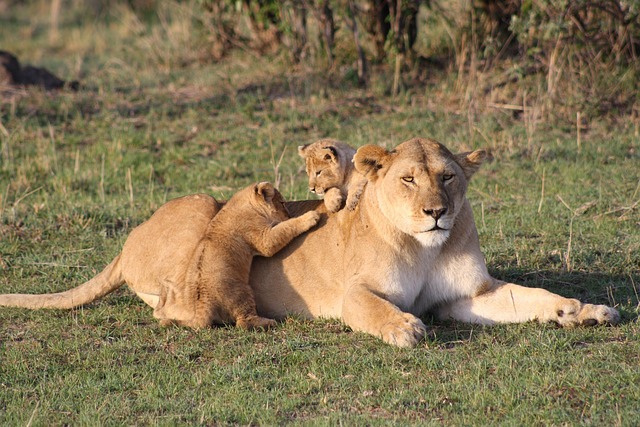
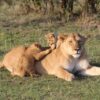
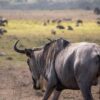

13 Comments
Good https://is.gd/tpjNyL
Very good https://shorturl.at/2breu
Very good https://shorturl.at/2breu
Awesome https://shorturl.at/2breu
Very good https://shorturl.at/2breu
Awesome https://shorturl.at/2breu
Good https://lc.cx/xjXBQT
Awesome https://lc.cx/xjXBQT
Awesome https://lc.cx/xjXBQT
Awesome https://lc.cx/xjXBQT
Good https://lc.cx/xjXBQT
Good https://lc.cx/xjXBQT
Very good https://urlr.me/zH3wE5